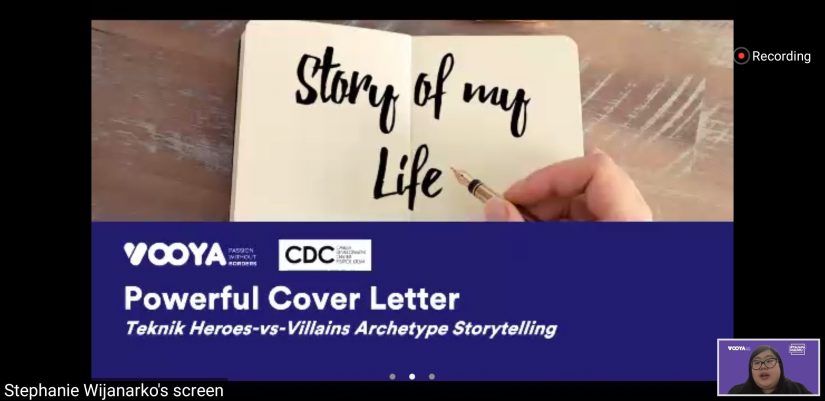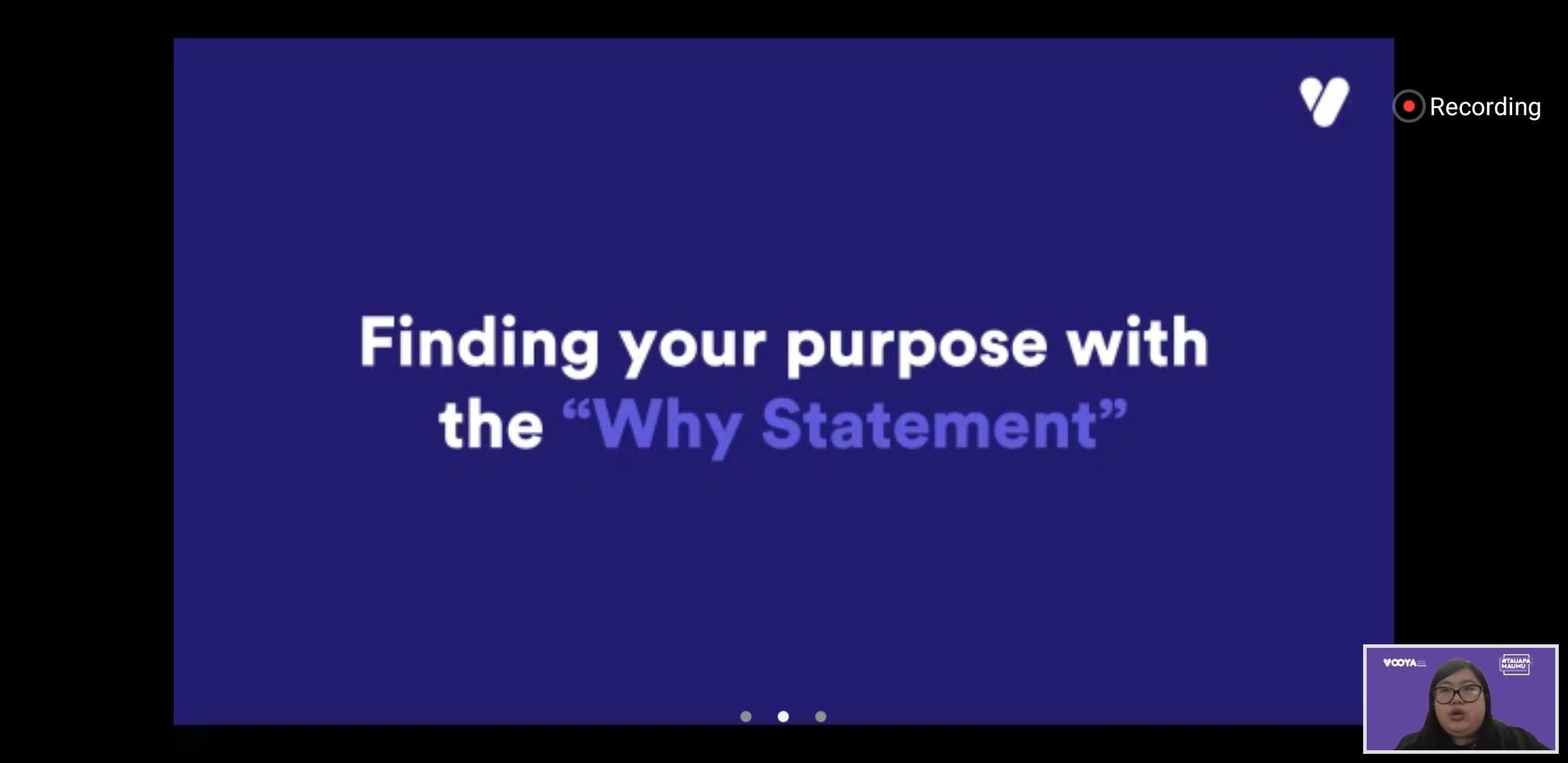
Yogyakarta, September 3rd 2020—“Cover letter is one of the requirements that is needed to apply for a job. Therefore, a cover letter should be interesting to succeed in the recruitment process. “At least 49% of HR managers consider a cover letter to be the second best thing that can boost an applicant’s resume,” said Stephanie Wijanarko, Program Director of VOOYA, in her introduction of the material in the webinar Powerful Cover Letter: Heroes vs Villains Archetype Storytelling Technique.
In the event organized by the CDC Fisipol UGM in collaboration with VOOYA, Stephanie explained some of the basic mistakes that often occur in writing cover letters, from typo, length of the letter, to the message that we want to deliver. Because the cover letter contains an explanation of what makes an applicant unique and suitable for a certain position, Stephanie emphasized that a cover letter needed to be written with a unique and authentic style by using storytelling methods. The delivery of messages using the storytelling methods can be maximized if the applicants know themselves well, one of them is by knowing their heroic archetypes.
The Heroic Archetype can help a person increase their awareness and provide an overview of their strengths, weaknesses, and values through storytelling. One can also create their own version of the hero based on the highest archetype yield. Stephanie also explained all the heroic archetypes one by one, starting from a brief explanation of each archetype, their strengths and weaknesses, what they wanted to achieve, their fear, as well as the action orientation of each archetype. In addition, Stephanie also provided tips in the form of questions that each archetype could explore to explore and describe themselves as best as possible in the cover letter. Stephanie emphasized that the use of a heroic archetype for self-depiction can not only be used for cover letters, but can also be used during interviews.

Stephanie also explained the importance of setting goals to be achieved — a step before someone finally writes about his life experiences. Setting goals can be done using the “Why Statement” method, a method that is easy and clear, and can be applied at the beginning of someone’s career. This method also focuses on how a person can have an impact on himself and others. Applicants can also write as many “Why Statements” as possible until they find one that suits them best, Stephanie added.
The combination of the heroic archetype and the “Why Statement” will then produce a good life story. Heroic archetype which contains descriptions and self-descriptions, combined with a Why Statement containing one’s own dreams and the impact of these dreams, can produce a life narrative that provides deeper insight into a person and how that person will achieve their dreams through storytelling that binds the reader. Of course Stephanie also provides examples and storytelling structures that can be used according to the formula she had explained.
A few days before the webinar, participants who registered were given a link test to see their heroic archetype. So that, when the webinar was held, the participants could understand the context that Stephanie explained in the presentation session. During the question and answer session, many of the participants asked Stephanie directly regarding the use of their archetype in applying for jobs.
In her closing statement, Stephanie reminded the participants not to feel inferior because everyone has their own strengths and weaknesses. The problem is how they can show themselves to be more attractive, but still be themselves. The event moderator—Alfira Nuarifa—also closed the webinar which was held through the Zoom Meeting at 02.25 p.m.
